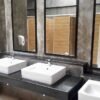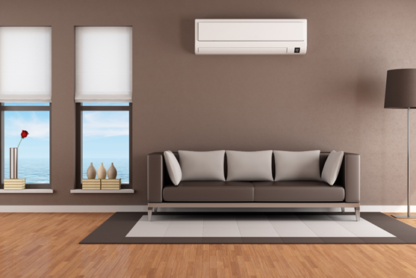Are you tired of searching for the perfect wardrobe that matches your style, fits your space, and doesn’t break the bank? Look no further! In this article, we explore whether building your custom wardrobe is a more affordable option.
When it comes to wardrobes, off-the-shelf options are certainly convenient, but they often come with limitations. You might compromise on design, quality, or even storage space. On the other hand, constructing your custom wardrobe allows you to create a bespoke piece that perfectly suits your needs and personal style.
But does going the DIY route save you money? Well, the answer isn’t as straightforward as you might think. While building your custom wardrobe can be cost-effective if you are skilled at woodworking or have access to affordable materials, it can also be time-consuming and potentially expensive if you lack the necessary skills or tools.
Here, we weigh the pros and cons, explore various cost factors, and provide essential tips to help you determine whether building your custom wardrobe is the budget-friendly choice for you. So, let’s dive in and discover the true cost of DIY wardrobes!
Pros and cons of building your custom wardrobe
Building your custom wardrobe offers several advantages. Firstly, you have complete control over the design and functionality of the wardrobe. Unlike store-bought options, which often come in standard sizes and limited styles, a custom wardrobe can be tailored to your specifications. You can customize the wardrobe with shelves, drawers, and hanging space to perfectly fit your storage needs.
Another benefit of building your custom wardrobe is the opportunity to use high-quality materials. While off-the-shelf wardrobes are often made from particleboard or low-grade wood, you can select premium materials like solid wood or plywood for your custom creation. This not only enhances the durability and longevity of the wardrobe but also gives it a luxurious feel.
However, there are some downsides to consider as well. Building a custom wardrobe requires a certain level of skill and expertise. If you are unfamiliar with woodworking or lack the necessary tools, you may need to invest time and money in learning or acquiring them. Working on a project alone can make the process time-consuming. It’s important to assess your abilities and availability before embarking on a DIY wardrobe project.
Factors to consider before building a custom wardrobe
Before deciding to build your custom wardrobe, there are several factors you should take into account. Firstly, determine your budget for materials, tools, and additional help. While building a custom wardrobe can be cost-effective, it’s important to have a realistic understanding of the expenses involved.
Next, consider your level of experience and skill in woodworking. If you are a beginner, it may be wise to start with a smaller project before tackling a full-scale wardrobe. This will allow you to familiarize yourself with the tools and techniques and build confidence in your abilities.
Another important factor to consider is the time commitment. Building a custom wardrobe is not a weekend project. It requires careful planning, measuring, cutting, and assembling. If you have a busy schedule or limited time available, you may need to adjust your expectations or consider seeking assistance from a professional.
Lastly, think about the level of customization you desire. Are you looking for a unique wardrobe design, or are you willing to compromise on certain features for convenience? Understanding your priorities and preferences will help you make an informed decision.
Cost Comparison: custom wardrobe vs. store-bought wardrobe
When it comes to cost, there are several factors to consider when comparing a custom wardrobe to a store-bought option. On one hand, building your wardrobe allows you to save on labor costs, as you are doing the work yourself. Additionally, you have the flexibility to choose affordable materials that fit within your budget.
However, it’s important to consider the hidden costs of DIY projects. In addition to the materials, you may need to invest in tools, such as a table saw, drill, and sander, if you don’t already own them. High-quality tools can come with a hefty price tag, making them an expensive investment. Furthermore, mistakes or miscalculations during the construction process can result in wasted materials, driving up the overall cost.
On the other hand, store-bought wardrobes may seem more expensive upfront, but they often come with added value. Many retailers offer warranties, professional installation, and customer support, which can be very helpful if you encounter any issues with your wardrobe. Additionally, store-bought wardrobes can be delivered and assembled quickly, saving time and effort.
Ultimately, the cost comparison between a custom wardrobe and a store-bought wardrobe depends on your specific requirements, budget, and available resources. It’s important to carefully consider all these factors before making a decision.
Steps to building your custom wardrobe
If you’ve decided that building your custom built in wardrobe is the right choice for you, here are some essential steps to help you get started:
- Measure your space: Begin by measuring where the wardrobe will be installed. Consider any existing furniture or fixtures that may affect the dimensions.
- Design your wardrobe: Using your measurements as a guide, create a design for your wardrobe. Consider the quantity of shelves, drawers, and hanging space you require. Sketch out the layout and visualize how the finished wardrobe will look.
- Gather materials and tools: Based on your design, create a list of necessary materials and tools. Research professional suppliers and compare prices to find the best deals.
- Prepare your workspace: Clear out where you will be building the wardrobe. Make sure you have enough room to work comfortably and safely.
- Cut and assemble the frame: Build the wardrobe frame using the appropriate measurements and materials. Use a table saw or circular saw to make precise cuts.
- Add shelves and drawers: Install the shelves and drawers according to your design. Make sure they are level and secure.
- Finish and paint: Smooth out any rough spots, and then apply your preferred finish or paint. This will protect the wood and give your wardrobe a polished look.
- Install hardware: Attach hinges, handles, and any other hardware to your wardrobe. Make sure they are properly aligned and secure.
- Install the wardrobe: Finally, carefully move the finished wardrobe into its designated space. Use a level to ensure it is straight and adjust as necessary.
By following these steps and taking your time, you can create a beautiful and functional custom wardrobe that perfectly suits your needs.
Tools and materials needed for building a custom wardrobe
To build a custom wardrobe, you will need the following tools:
- Table saw or circular saw
- Drill and drill bits
- Screwdriver
- Sander or sandpaper
- Measuring tape
- Level
- Clamps
- Hammer
- Chisel
- Paintbrushes or rollers
As for materials, it will depend on your design and preferences. Here are some common materials used in building custom wardrobes:
- Plywood or solid wood for the frame and shelves
- MDF or particleboard for the back panel
- Screws, nails, and other fasteners
- Hinges and handles
- Paint or finish
Put all necessary tools and materials on hand before starting construction.
Tips for designing and planning your custom wardrobe
Designing and planning your custom wardrobe is a crucial step in the process. Here are some tips to help you create a functional and visually appealing design:
- Assess your storage needs: Before starting the design process, take inventory of your clothing, shoes, and accessories. This will help you determine the amount of hanging space, shelves, and drawers required.
- Consider the available space: Take accurate measurements of the space where the wardrobe will be installed. Consider any architectural features, such as windows or doors that may affect the design.
- Optimize storage: Think about how you can maximize storage efficiency. Incorporate features like adjustable shelves, shoe racks, and built-in organizers to maximize the available space.
- Choose a style: Decide on your wardrobe’s overall style and aesthetic. Consider the existing decor in your room and choose materials, colors, and finishes that complement it.
- Seek inspiration: Browse interior design magazines, websites, and social media platforms. Save images of wardrobes that catch your eye to help you visualize your design.
- Sketch it out: Use graph paper or design software to create a scaled drawing of your wardrobe. This will help you visualize the wardrobe layout and ensure accurate measurements.
- Consult with professionals: If you are unsure about the technical aspects of your design, consider consulting with a professional. They can provide professional insights and help you avoid costly mistakes.
By following these tips, you can create a custom wardrobe design that meets your storage needs while reflecting your style.
Conclusion: Is building your custom wardrobe worth it?
After weighing the pros and cons, considering various cost factors, and examining the steps involved in building a custom wardrobe, the question remains: is it worth it?
The answer ultimately depends on your circumstances, skills, and preferences. Building your custom wardrobe can be a cost-effective option if you have the necessary skills or are willing to learn, have access to affordable materials, and enjoy the process of DIY projects. It allows you to create a wardrobe that perfectly suits your needs and personal style, offering customization that store-bought options simply can’t match.
However, if you lack the skills, time, or resources required for a DIY project, or if you prioritize convenience and warranty support over customization, a store-bought wardrobe may be a better choice for you.
Remember to carefully consider your budget, skills, and available resources before deciding. Whether you build your custom wardrobe or opt for a store-bought option, the most important thing is to create a storage solution that meets your needs, fits your space, and makes you feel organized and satisfied.









